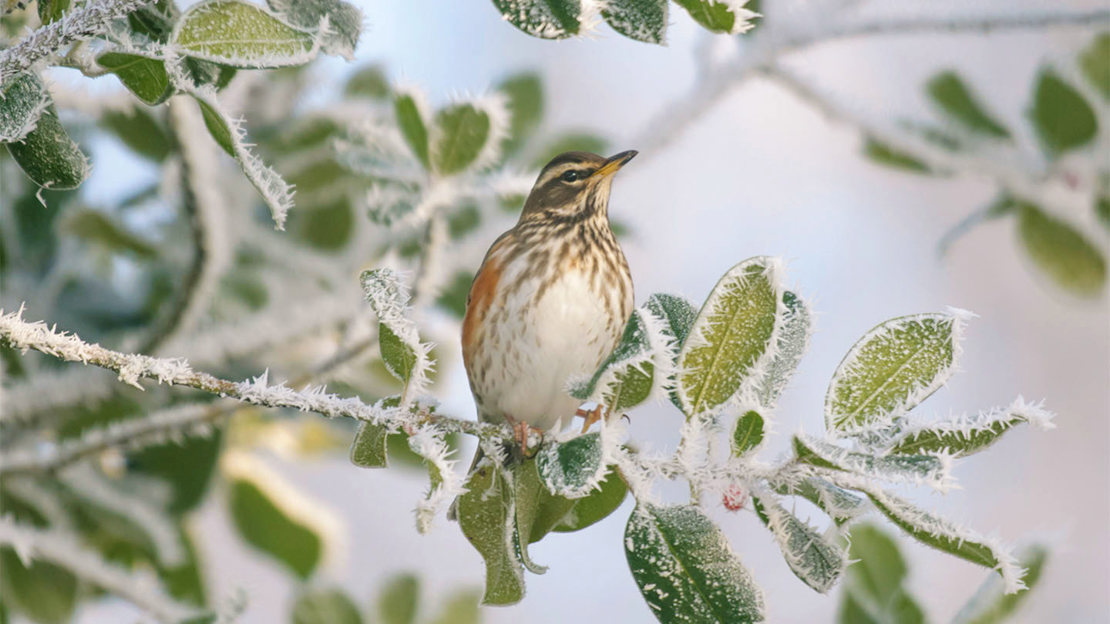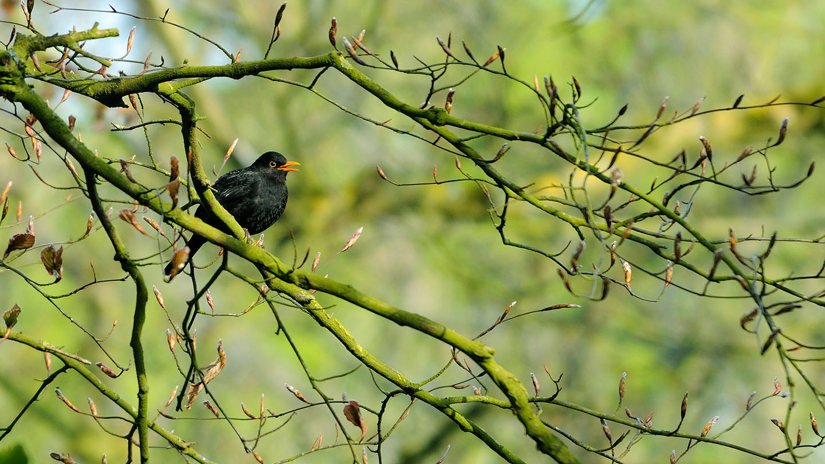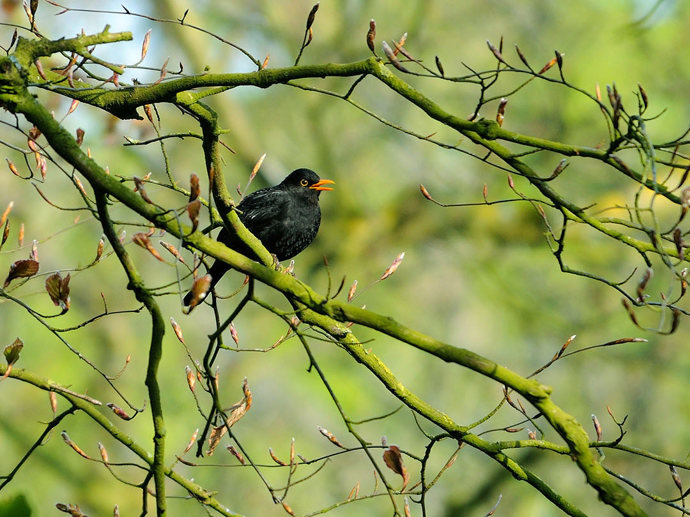Common name: redwing
Scientific name: Turdus iliacus
Family: Turdidae (thrushes)
Habitat: open country, hedgerows, parks, gardens
Diet: berries, worms, fruit
Predators: birds of prey
Origin: native
Named after its rouge underwings, the redwing is the smallest thrush in the UK. A social nomad, this berry-loving bird only visits over the winter months, with just a handful of breeding pairs staying here all year round.

Common name: redwing
Scientific name: Turdus iliacus
Family: Turdidae (thrushes)
Habitat: open country, hedgerows, parks, gardens
Diet: berries, worms, fruit
Predators: birds of prey
Origin: native
The UK’s smallest thrush, the redwing, is around 21cm in length with a wingspan of up to 35cm. It has a creamy-white chest covered in dark brown streaks, a distinctive red-orange underwing and a creamy-white stripe above its eye.
Not to be confused with: fieldfares, which are often seen feeding with groups of redwings. The fieldfare lacks the redwing’s eye stripe and has a yellow-orange chest.

Credit: Alan Williams / Alamy Stock Photo
Redwings feed on worms and berries, particularly hawthorn and rowan. When food is scarce they will venture into gardens and orchards in search of a bite to eat – apples are another favourite of theirs.
Redwings were the first bird species which were proven to detect fruit using ultraviolet vision. This is because the waxy coatings of berries reflect UV light, making them more appealing to birds.
Only a very small number of redwings breed in the UK, most of which are restricted to the north of Scotland. They build a cup-shaped nest out of grass, moss, twigs and lichen, usually low to the ground in dense vegetation. Four to six eggs are laid, and after 10–14 days the chicks hatch. It takes around two weeks for the young to fledge; however, they will still depend on their parents for a further two weeks. Due to the quick fledging time, this allows for a second brood.

Credit: Mikelane45 / iStockPhoto.com
Redwings migrate from Iceland, the Faroes and Scandinavia to the UK, often travelling by night. They spend the winter here, usually from October to April.
They are known as something of a nomad in the bird world, very rarely returning to the same place to spend the winter.
These winter migrants are widespread across the UK in open country, fields and hedgerows, but will visit gardens and parks during periods of very harsh weather.


Credit: Tony Cox / WTML
As redwings only visit the UK during the winter, this is the time to be on the lookout for them. These social birds can often be seen in flocks with fieldfares, foraging for food. Having a hawthorn or rowan bush in your garden is a great way of increasing your chances of sighting one, as is leaving apples and mealworms out for them on bird feeders.


External link
Record the comings and goings of key feathered friends and help scientists track the effects of climate change on wildlife.
Due to the tiny numbers that breed in the UK (usually less than 20) the redwing is classed as a Red List species of conservation concern. It is believed that climate change could ultimately cause the loss of this already small breeding population.